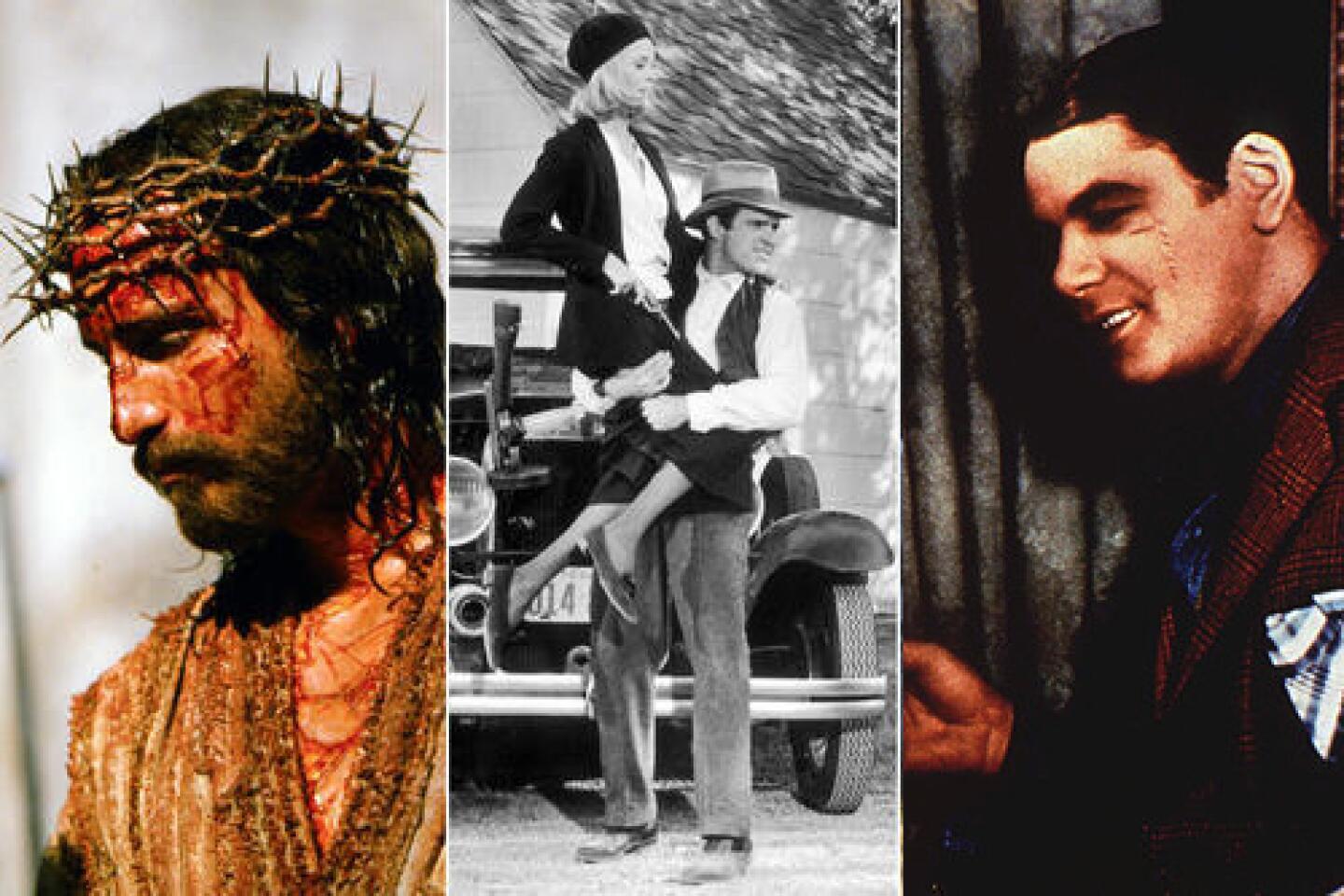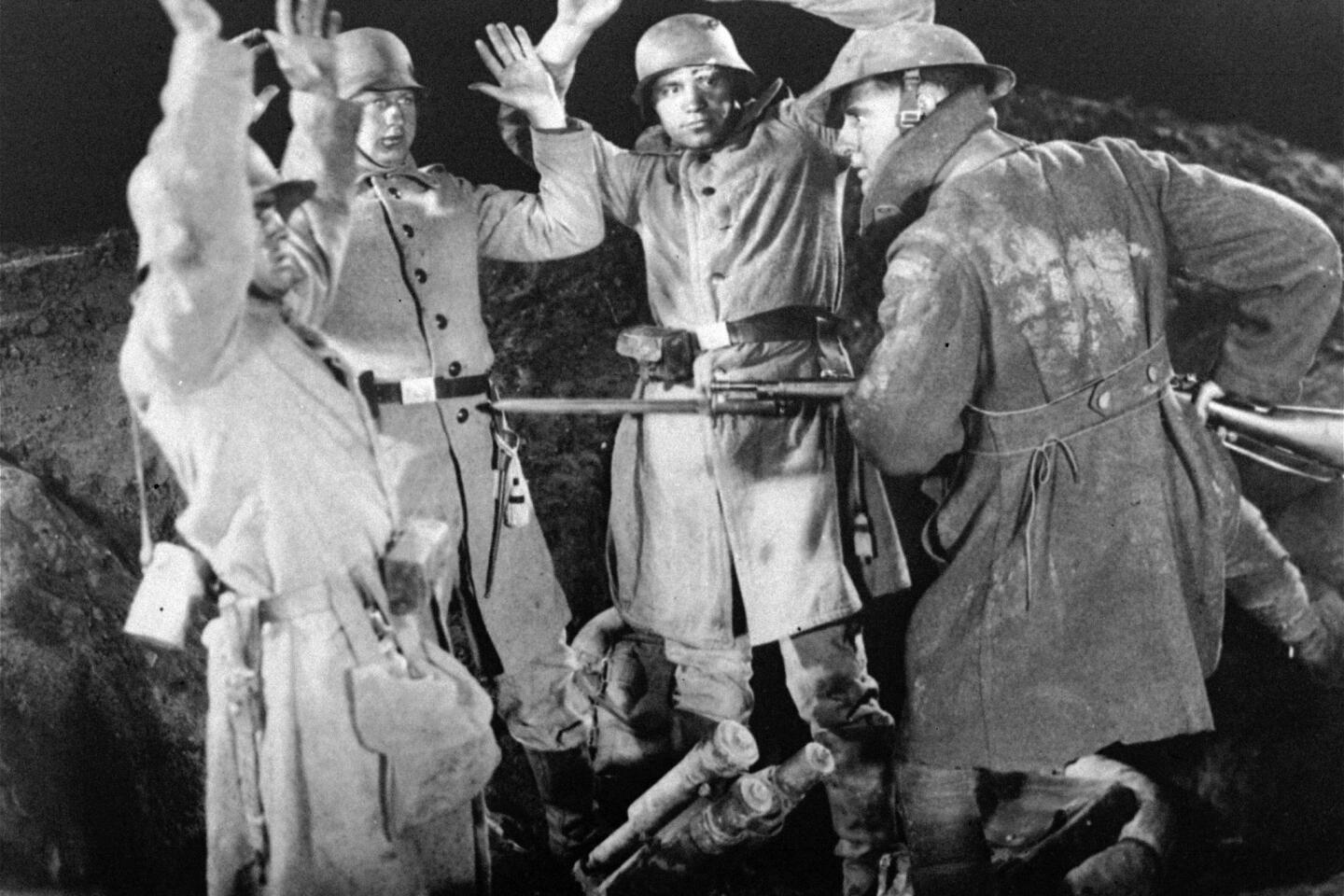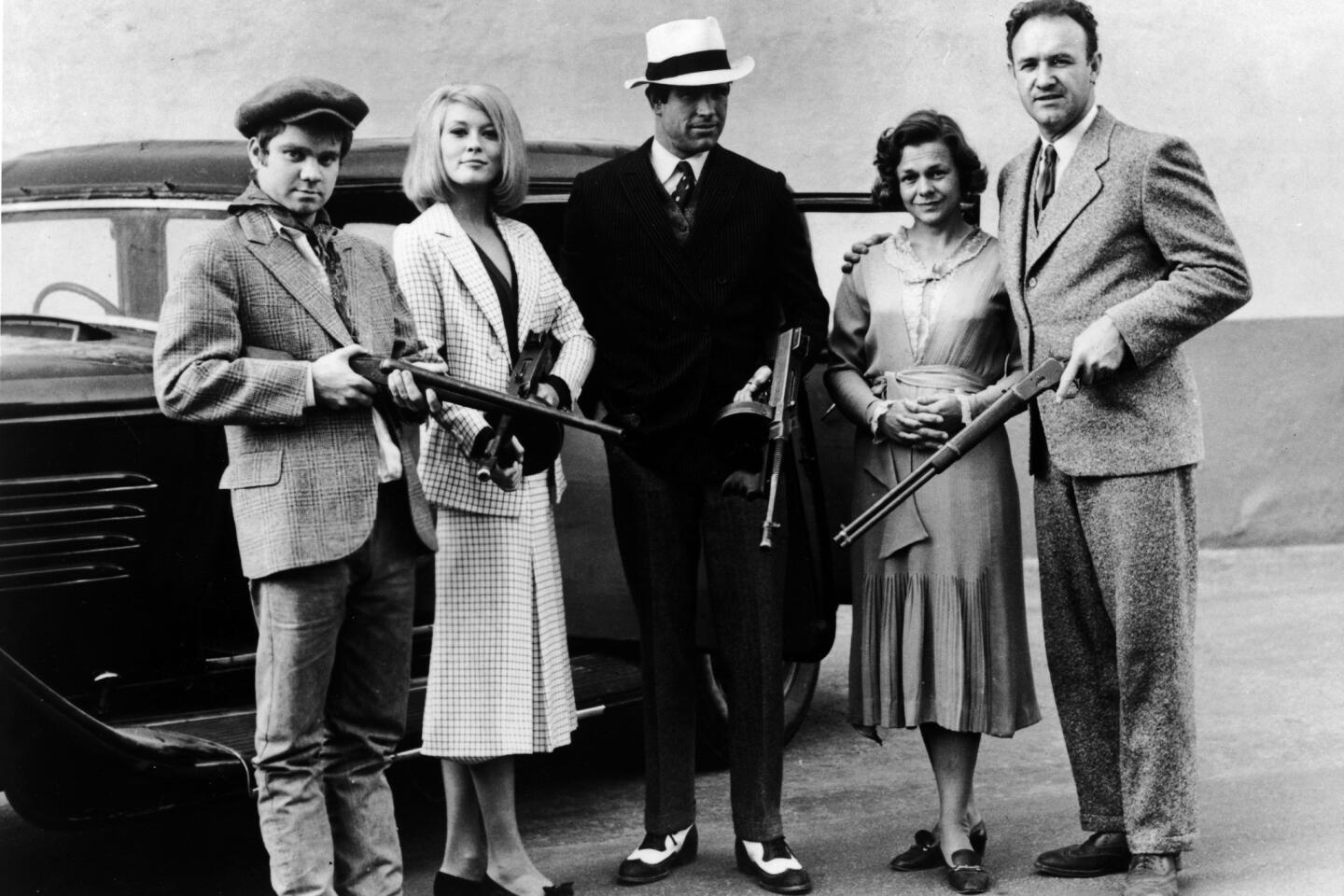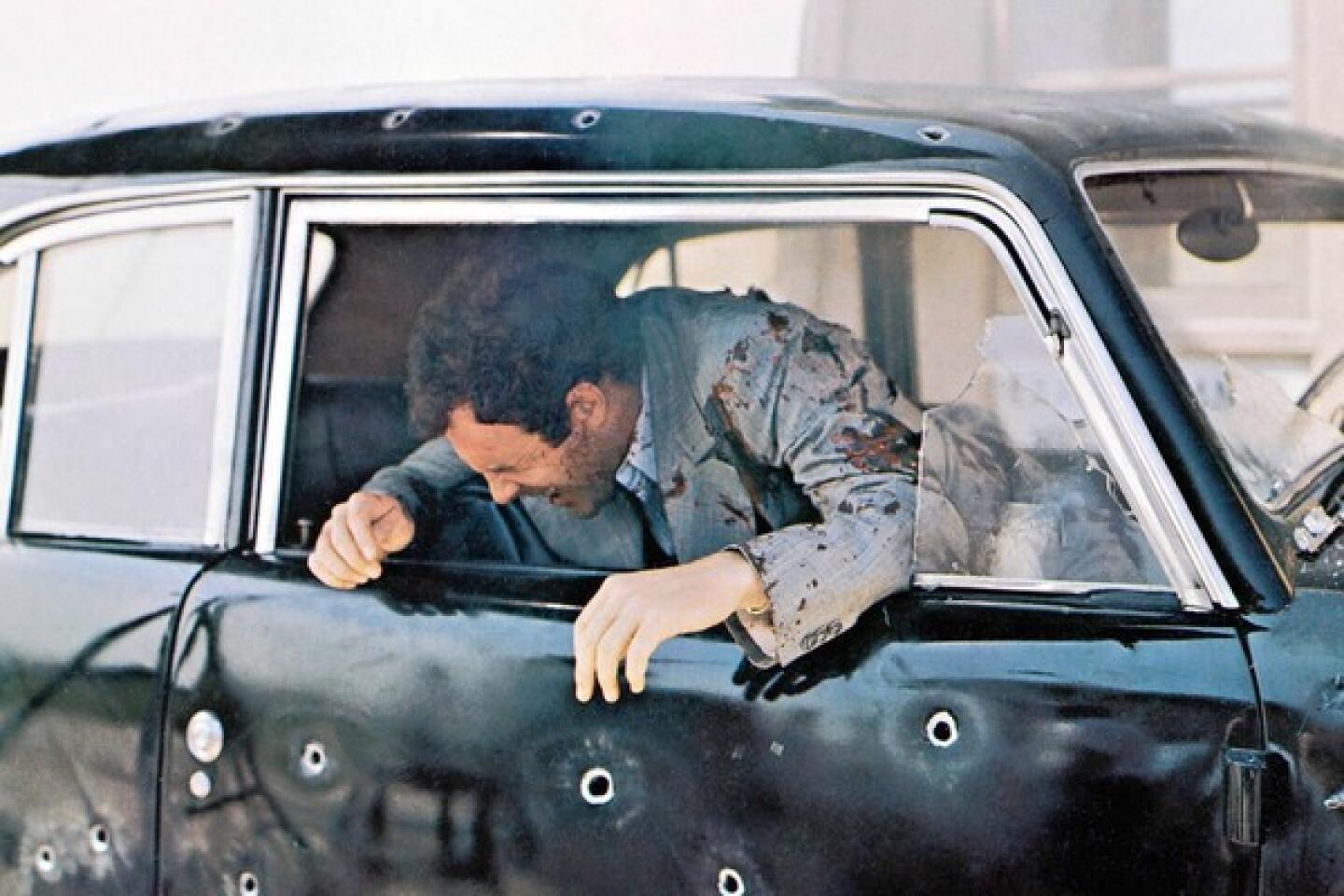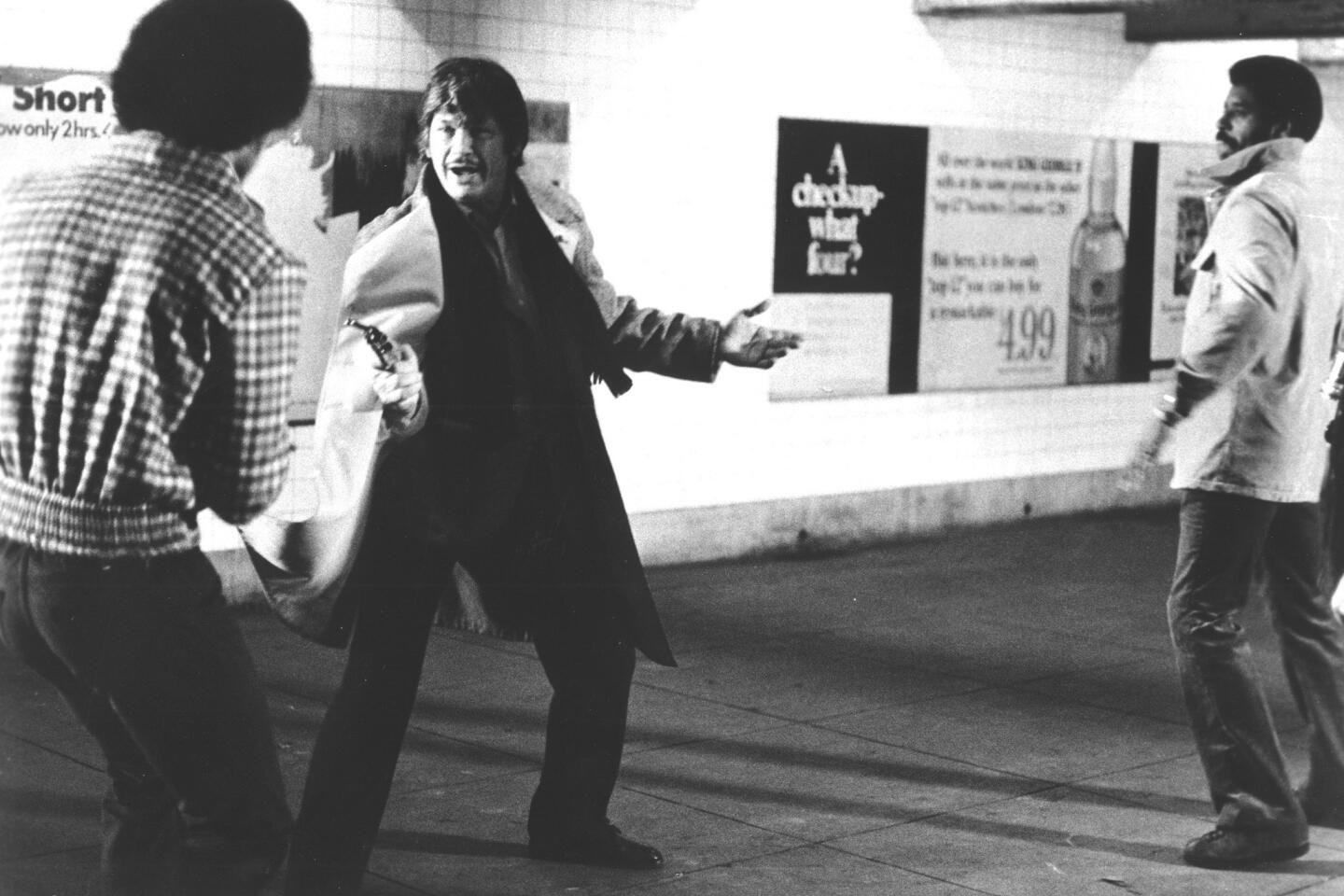Film, TV violence is an intensely sensitive subject for some
- Share via
Years after she first saw “The Passion of the Christ,” Lori Pearson still feels queasy when she recalls the brutally graphic movie about the final hours of Jesus’ life.
“After I left the theater I remember feeling physically uncomfortable,” said Pearson, a Dublin, Ohio, mother of two teenagers who writes movie reviews for the website Kids in Mind. “It was gruesome torture sequence after gruesome torture sequence. That kind of thing has a tendency to stay with me.”
Pearson and her husband, Aris Christofides, started writing highly descriptive online reviews in 1992 to help parents navigate the sometimes confusing nature of movie ratings, but over the years their audience has evolved to include an unexpected group: adults looking to avoid certain types of screen violence themselves.
THE CULTURE OF VIOLENCE: Art | Film | Television | Hollywood
“We get a lot of email from women who’ve been victims of sexual violence and don’t want to see those kinds of scenes,” Pearson said. “We get email from people who’ve been in a car accident and don’t want to see a movie with a car accident. And a lot of people just can’t tolerate torture — including me.”
Amid the heated public debate over whether violent entertainment causes or encourages aggressive behavior, it’s easy to overlook members of the audience who are quietly but profoundly affected by scenes of murder and mutilation in movies and television — the ones who go home and pull their covers over their heads or go out of their way to avoid such fare entirely.
Although it’s not often discussed, some people are more sensitive to screen violence than others, both for reasons of physiology and life experience.
In a world where increasingly grisly entertainment is delivered on bigger screens, with more realistic visual effects and in the sometimes assaulting detail of high definition and 3-D, those with more delicate sensibilities may feel under siege. And with violent movies such as “The Dark Knight Rises” and “The Hunger Games” among last year’s highest grossers and programs like “Criminal Minds” and “The Walking Dead” scoring some of TV’s highest ratings, Hollywood has little incentive to cater to them.
THE CULTURE OF VIOLENCE: Video Games | World Cinema
San Francisco psychologist Elaine Aron estimates that 15% to 20% of people are “highly sensitive,” a group she identified in the 1990s and published research on in medical journals such as Social Cognitive and Affective Neuroscience and the Journal of Analytical Psychology. Along with being more affected by noises and smells, these same people tend to react more strongly to violent imagery.
“Sensitive people have more active mirror neurons,” Aron said, describing a type of nerve cell that neuroscientists have only recently begun to research. “These are the parts of the brain where if you see somebody kick a ball, you feel as though you’re kicking the ball yourself. Then there are other parts of the brain that tell you, ‘No, it’s not you.’ But the experience of empathy still happens, and for some people, it’s very intense.”
Sensitive viewers don’t just react while sitting in a movie theater — with a quickening of the pulse and a surge of stress hormones — but long after, often experiencing nightmares or feeling uncomfortable in situations that remind them of the scene.
Anyone who has ever thought of “Jaws” while wading in the ocean or “Psycho” while taking a shower can relate to the indelibility of certain filmed images. But for some people the pictures pose real and lasting problems.
THE CULTURE OF VIOLENCE: On-screen history | Theater | Research
After seeing the 1967 Audrey Hepburn thriller “Wait Until Dark,” Joanne Cantor couldn’t sleep for days. Cantor, an expert on the psychological effects of media and a professor emeritus at the University of Wisconsin-Madison, was in her 20s and had just moved to Paris. Like Hepburn’s character, who is blind and being pursued by criminals, she was a vulnerable young woman in an unfamiliar setting.
Repercussions from media violence, as Cantor found, are more acute when we’re young. Imagery we see when we’re younger than 13 leaves a particularly lasting imprint, she said, and children under 5 are almost completely unable to differentiate fiction from reality.
In surveys of 530 of Cantor’s undergraduate students, 86% reported having some fright symptoms after viewing certain kinds of media when they were under age 13. Some said they couldn’t sleep for days, while others reported ongoing discomfort around normally nonthreatening objects or beings, such as clowns or animals.
“Our brains are made to respond negatively to depictions of violence,” said Cantor, who also wrote the book “Mommy, I’m Scared.” “The fear response is designed to keep us alive. Some people say, ‘Why am I such a baby? What’s wrong with me? This gives me nightmares, but this is what my boyfriend wants me to watch.’ I tell them, ‘You’re human, there’s nothing wrong with you.’ Our brains evolved to respond this way before there were movies.”
Some of what determines whether an audience enjoys a violent movie is in the genes, but some of it is in personal histories, according to Michael Pluess, a psychologist at the Institute of Psychiatry at King’s College in London who studies why some people are more influenced by their environment than others.
THE CULTURE OF VIOLENCE: Full coverage
“If someone has a very strong reaction to specific things they see, it might be that it reminds them of a trauma,” Pluess said. “It might be more than sensitivity, it might be a fear response — a blood phobia, a dog phobia.”
For those who do feel the reverberations of media violence more thoroughly, these can be trying times to go to the movies, Pluess said. Consider recent offerings such as the horror film “Texas Chainsaw 3D,” in which a man is dragged into a meat grinder or the Sylvester Stallone action film “Bullet to the Head,” in which a bullet speeds toward the audience in the opening credits.
“As a society we’ve gotten habituated to special effects, 3-D — the filmmakers are trying everything possible to help us forget this is a film,” Pluess said. “For people who are more affected by what they can see, they might struggle to realize they are not part of the film.”
Hollywood studios are aware of different peoples’ sensitivity to violence, according to Vincent Bruzzese, president of the motion picture group at the market research firm Ipsos, and they try not to blindside audiences with misleading marketing — sending someone expecting a cerebral thriller to a gory horror film, for instance. But ultimately the studios’ decisions are governed by the marketplace.
“If [violence] didn’t make money, studios wouldn’t make these movies,” Bruzzese said. “It comes down to what’s the biggest audience we can get for the best film we can make. The studios would put out a four-hour documentary about how to garden tulips if they thought they’d have a $100-mil opening weekend. But it doesn’t work that way.”
THE CULTURE OF VIOLENCE: Art | Film | Television | Hollywood
Pluess does see a potential upside for the sensitive among us. He recently conducted a pilot experiment in which he showed two film clips to a group of 90 people — one was a humorous scene from the romantic comedy “When Harry Met Sally,” the other a scene in which a character died in the boxing drama “The Champ.” After watching the clips, the group had to rate their feelings.
Some were unaffected, some deeply so. The people who had the strongest negative response to “The Champ” were often the same ones who had the strongest positive response to “When Harry Met Sally.”
“It’s not just that some people are more affected by violence — those same people enjoy more the benefit of a film,” Pluess said. “When there’s a romantic moment or a funny moment, they feel it more too.”
More to Read
Only good movies
Get the Indie Focus newsletter, Mark Olsen's weekly guide to the world of cinema.
You may occasionally receive promotional content from the Los Angeles Times.
